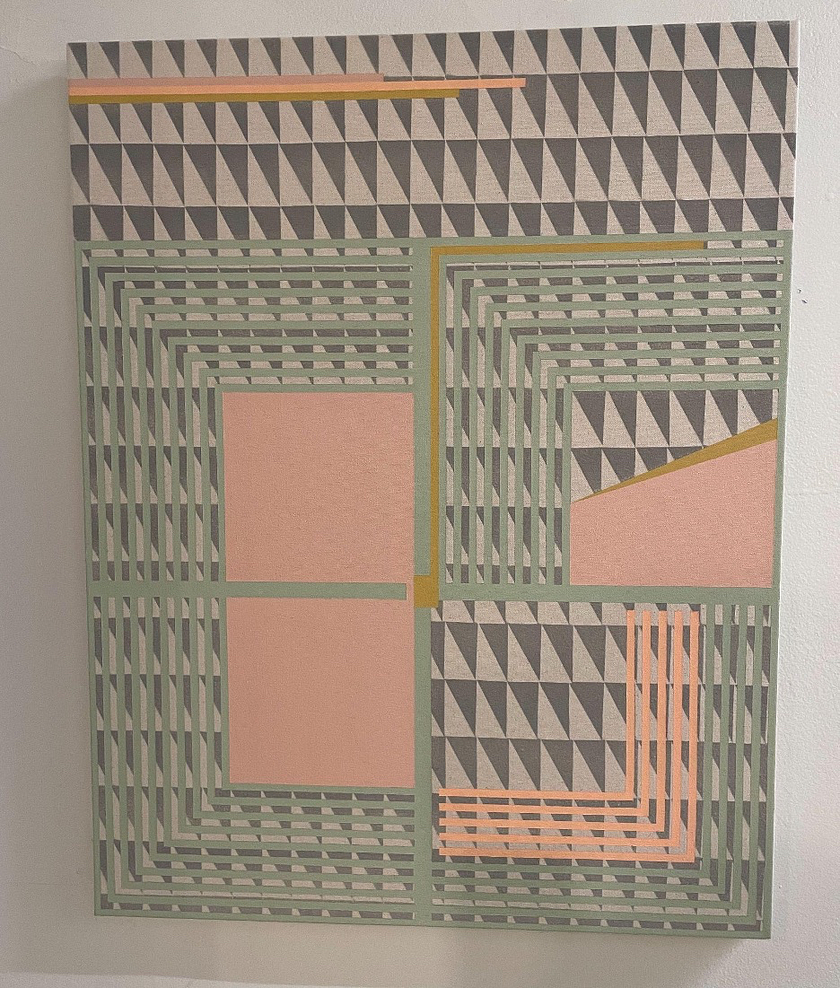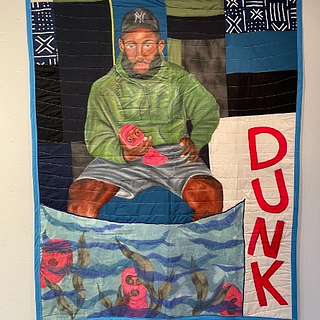Quilty Pleasures
Elephant Gallery
Buchanan Arts District
Nashville
Through Jan. 27
Through the windows of Elephant Gallery, I saw an elephant, a lamp toilet, Tweety Bird. I cursed myself for not thoroughly checking the gallery’s hours. I wanted to go in and see it all, but as it was my first time there, I missed that its weekday hours were by appointment only. This only made my anticipation of checking out the Elephant Gallery’s current show — “Quilty Pleasures” — all the sweeter.
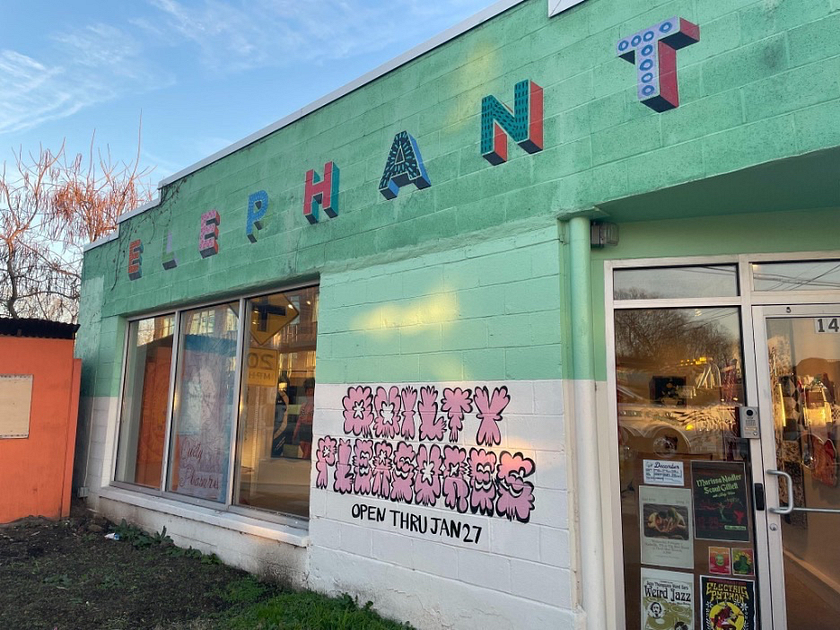
I came back the next day and a lovely artist who keeps a studio at the gallery, along with seven others, let me in.
“Quilty Pleasures,” on display until Jan. 27th at the Elephant Gallery in the Buchanan Arts District of Nashville, was as enthralling as the name implies. Curators Alex Lockwood and Ash Atterberry sifted through over 120 submissions, a mix of local and regional artists, through an open call on social media and email. Out of the 34 stunning works they chose, it would be difficult to pick a top five, let alone a favorite, but luckily, that isn’t my job. Each piece offers a different perspective on the quilt, delightfully blurring the lines between sculpture, canvas, portrait, bedding, even furniture.
Ludie Amos, who has three works on display, plays with a number of possibilities in her quilts. Her two sculptures, Quilting and Crowded, employ the quilt as more of a character in the storytelling rather than the medium. Both pieces capture the spirit of the traditional quilt: collaborative not only in its making, but in its use over time. Quilting shows three women, seemingly from different generations, in conversation around a quilt in progress. Crowded shows a family of four in bed under a single holiday quilt. Quilts have a tendency to change hands over time, and the process and emotional toil of the quilt-making inform the object as much as the memories of its uses. Amos communicates this beautifully.
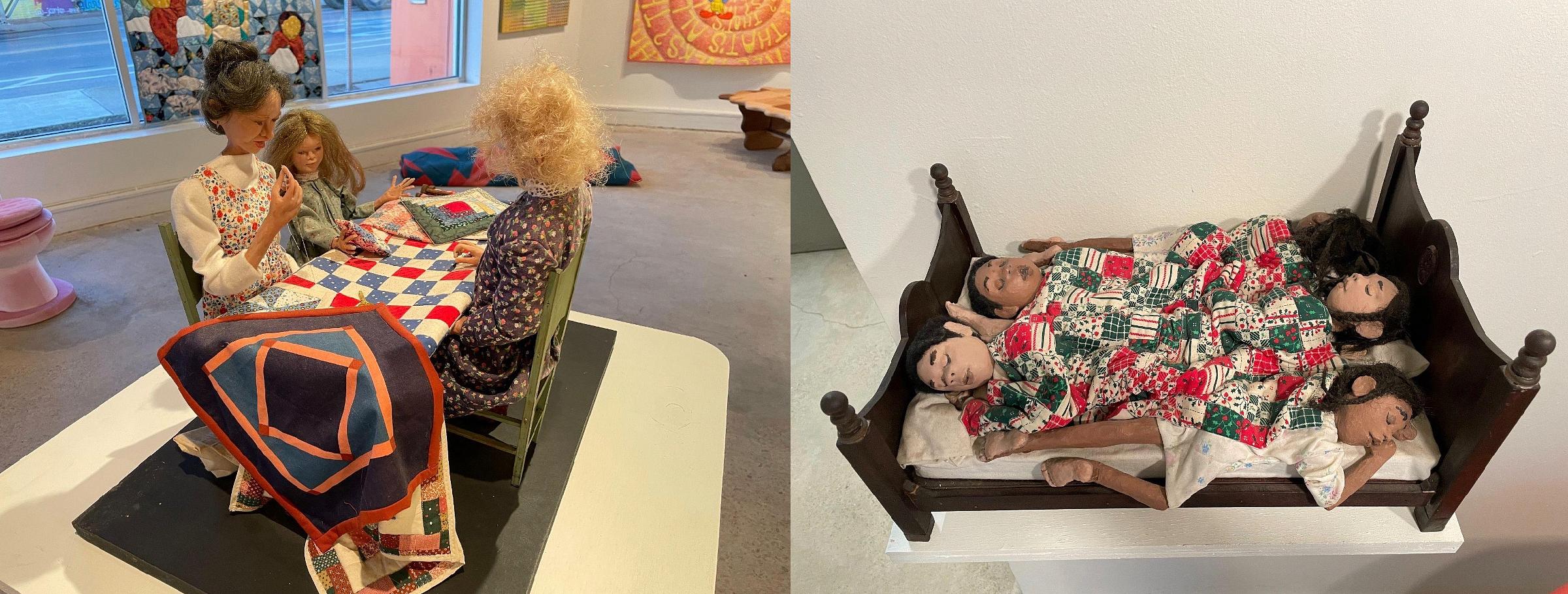
On the other hand, her piece Sunday Paper uses quilting as the actual medium to depict a portrait of a grandfather and grandchild in the ritual of reading the Sunday paper together. Its clever uses of mixed materials and stitching variation to create texture and character is a hallmark of pieces throughout the gallery.
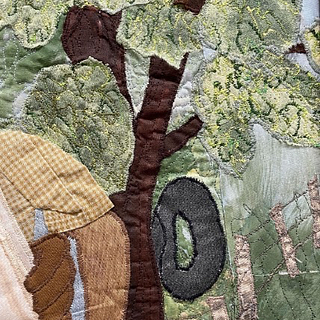
Just a few of many examples of this are Coorain Devin’s Kraft Singles American Cheese Slices, shrouded in the thin plastic wrapping native to a Kraft single; Callan Downing’s In His Image, whose rambling and playful stitching added to the cartoon quality of the quilt; and both of Chris Edwards’ works that communicated a feeling of three-dimensionality through the use of zippy fabrics. Then, of course, there were the works that didn’t use traditional fabrics at all, opting instead for quilted beer koozies or plastic wrappers.

Back on the topic of blurred lines, there is Jenna VanFletern’s Soft Stool, which greets visitors upon entering the gallery. Essentially a lamp and stool, the sculpture is composed of fuzzy pink fabric stuffed with batting and foam quilted over a wooden structure in the shape of a toilet and complete with a working light fixture. Across the room, the wooden quilt of Zag Wonk from artist Taylor Williams takes the form of a table.

In the works of Aliyah Bonnette, Three Throws for Forever and Enamored by Your Mist, the quilt serves as both canvas and medium, with vibrant paintings overlaying the quilting, and then fabric again overlaying the painting to create a fully integrated piece of painting and textiles. My iPhone camera, frankly, does not do these pieces justice, as Bonnette’s colors are vibrant and crisp and the paints read as part of the fabric.
Then there are pieces that aren’t quilts at all, at least in the literal sense, and instead used acrylics on canvas to capture the spirit of a quilt. I wish I had the space to share a photograph of every piece in Elephant Gallery, but you’ll just have to make a trip there yourself before the end of January. The vibrant and progressive collection of pieces left me mulling the very basic question — art-schooly yet important — of what a quilt was in the first place.
My grandmother has always had a quilt hung on her dining room wall that I’m sure no one has ever, or will ever, be allowed to sleep under. Quilts have always combined art and function, even in their most basic form, and are more than the sum of their literal materials. “Quilty Pleasures” allows an exploration of just how far the possibilities of a quilt can go.
